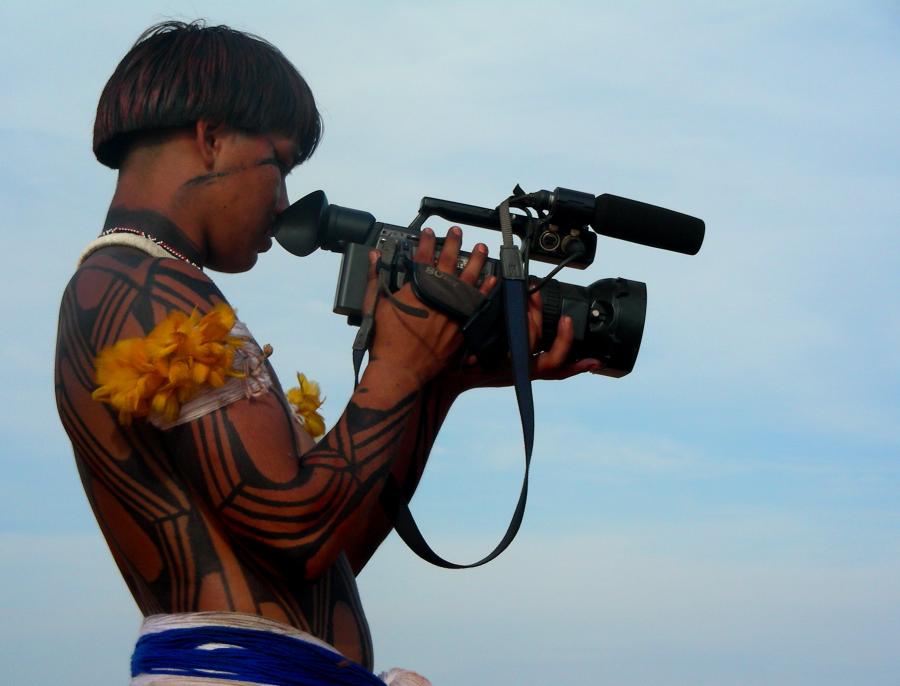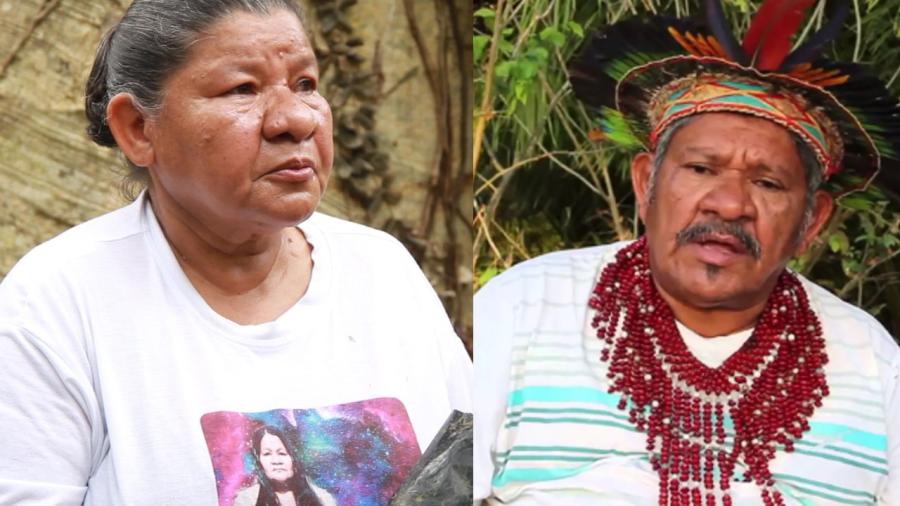By Lucas Martins (Quilombola) with contributions from Lurdes Santos Martins and Geralda C. Soares
(Translation from Portuguese and revision by Edson Krenak)
“Physical slavery may have ended, but the torture continues in different forms.”
In the Jequitinhonha Valley of Minas Gerais, Brazil, the Quilombola, who are descendants of enslaved African people who escaped from plantations and formed their own communities, and the Arana, Pataxo, and Pankararu Peoples (the Indigenous communities of Araçuaí), are waging a critical battle against the encroachment of lithium mining on their ancestral lands. Among these resilient groups, the communities of Quilombola São Benedito do Giral and the Quilombola Córrego Narciso do Meio have emerged as key figures in the fight for environmental justice and the protection of their cultural heritage.
Nestled within the Environmentally Protected Area of Lagoão (APA) in the municipality of Araçuaí, the Quilombola community of Giral carries a rich history of resistance and resilience. The people of Giral have a distinct appearance due to their mix of African and Indigenous ancestry, and their story is deeply intertwined with the legacy of enslaved people and the subsequent quest for freedom and autonomy. I was born in that community and grew up listening to stories like these, told by my grandmother and the Elders in our village.
Before the abolition of enslaved people in Brazil in 1888, an old family (who still have living relatives known in Araçuaí) lived at the foot of Lagoão. Their farm was large, and they owned many enslaved Peoples. The farmer was very cruel, often tying enslaved people to a log, beating them, and leaving them without food and water for several days, leading to many deaths. The women had to work day and night. Sebastião Artesão, an Elder in my community, has said that during that time, Lagoão was a forest inhabited by both Indigenous people and enslaved peoples, each of whom was aware of the other's presence.
The Indigenous village was where the Giral community is today. The enslaved Peoples, unable to bear the suffering, decided to kill the master and his family. They made an agreement with the Indigenous people that after the murder they would flee to the village. The Indigenous people taught the enslaved people how to make traps. Despite the difficulty of hiding, the enslaved people used these traps to protect themselves from the cruel foremen known as "Capitães do Mato," who hunted runaway enslaved people with dogs.
The enslaved people constructed wooden traps with large stones on top, and when the foremen approached, the enslaved Peoples would roll the stones down, scaring them away. This led to great turmoil. Some enslaved people were captured and beaten to death; others were sent to work in the coffee plantations in Teófilo Otoni, and some fled to Araçuaí to form the Quilombo community of Arraial dos Crioulos. Researchers have discovered remnants of a wooden staircase used by enslaved peoples during their escape across the hills, and many documents are in the archive of the Centro de Memória dos Povos Indígenas do Jequitinhonha e Mucuri under the protection and management of Geralda C. Soares, a knowledge keeper of the Valley.
The history of Córrego Narciso involves a large landowner who possessed vast tracts of land. Over time, people began to settle in the community. The Elders recount that many of their great-grandparents were captured in the wilderness by dogs after fleeing from local farms or the coffee and sugar cane plantations in the state of Bahia. As they were fugitives and had no contact with others, they were unaware that slavery had ended, and they continue to live there to this day.
The communities of Giral and Córrego Narciso both retain significant cultural aspects, such as women’s drumming in Córrego Narciso, the Folia de Reis, horseback riding, and penances, among other cultural practices. However, these cultures are being lost due to the lack of public policies that would provide access to clean water, adequate health care, quality housing, and schools. Today, the greatest difficulty for the communities in Jequitinhonha is the lack of public policies and the political will of the State to develop them.
Photo of the APA by Lucas Martins Pereira.
Our region is known as the poorest in Brazil, but it has recently become the richest due to lithium exploitation. It is being devastatingly exploited in ways that are weakening the communities. Mining companies use tactics such as the promise of job creation and regional development to gain the trust of communities, a strategy that dates back to the era of diamond exploitation and other enterprises like the Irapé Hydroelectric Plant and eucalyptus monoculture. This approach portrays traditional communities as obstacles to local development, pitting them against each other and weakening them to achieve corporate goals. The only thing the communities demand is for the State to recognize and respect their rights.
Among these conflicts was an event on February 1, 2023, when the Environmental Protection Area Council, despite being warned about the violation of the right to Free, Prior and Informed Consent, granted Sigma Lithium Co. the right to conduct research studies in the Environmental Protection Area through a 9-5 vote. The communities, especially Córrego Narciso, sought help from the Federal Public Prosecutor's Office, which filed a lawsuit demanding the right to FPIC as per ILO Convention 169. This action resulted in the annulment of the decision that allowed the research vote in the area.
Today, the greatest suffering of the communities is the violation of their rights. There is notable discontent with the municipal government, which continued to disregard community concerns even after they approached the Federal Public Prosecutor. The current mayor requested that the company develop the Environmental Protection Area management plan, disrespecting the communities residing there. This violated ILO Convention 169 and our right to be consulted and participate in decisions affecting our lives. Even though communities know their rights, they still fear that their territories might be invaded by other companies present in the region, holding meetings with maps of our lands in their hands.
The Lagoão Environmental Protection Area is very important for the traditional, Indigenous, and Quilombola communities of the region. We live in a transition biome between the Atlantic forest, Cerrado, and Caatinga, with the Caatinga being the predominant climate and biome. It is a semi-arid region with poorly distributed rainfall and regular droughts. The Environmental Protection Area protects us from drought, as it has 139 cataloged water springs by national authorities and research institutes. It supplies the Giral Quilombola and many families in Córrego do Narciso. Additionally, the region is rich in medicinal plants with knowledge passed down through generations by Indigenous and Quilombola communities, as cited in the history of Giral. Local Indigenous Peoples like the Aranãs Caboclos and the Pankararu use native remedies and fruits and unique local straw for various purposes. The area is also known as the "Lungs of Araçuaí" for being the densest forested region in the area.
View of the APA Lake by Lucas Martins Pereira.
There is a concern about clandestine research related to mining within the Quilombola Environmental Protection Areas. People with drones enter without notifying the community, conducting lithium and other mineral research, and cataloging the data to sell to large companies under the pretext of producing so-called green energy. Other unknown entities propose building consultation protocols, trying to facilitate the entry of mining companies into the Quilombola communities. The fight continues to guarantee our rights, equality, culture, roots, and our little piece of land. We reject this model of development called the ‘just transition’ when it ignores our culture and history. More important than the right to green energy is our right to water and territory. We need more culture and land, not more mining.
We cannot talk about solidarity with the world or a clean energy transition if its construction devastates our communities. Physical slavery may have ended, but the torture continues in different forms, only noticed by those who directly experience it. We need economic and development support from the State, not from mining companies. If the State fulfilled its role, we would have our needs met with regard to health, education, roads, water, and territory. The current model of development offered by the State is one of death, not improvement.
Top photo: Women preparing for a traditional Quilombola music and dance performance, getting ready to showcase their rich cultural heritage through vibrant dance and rhythmic music. Photo by Edson Krenak.



